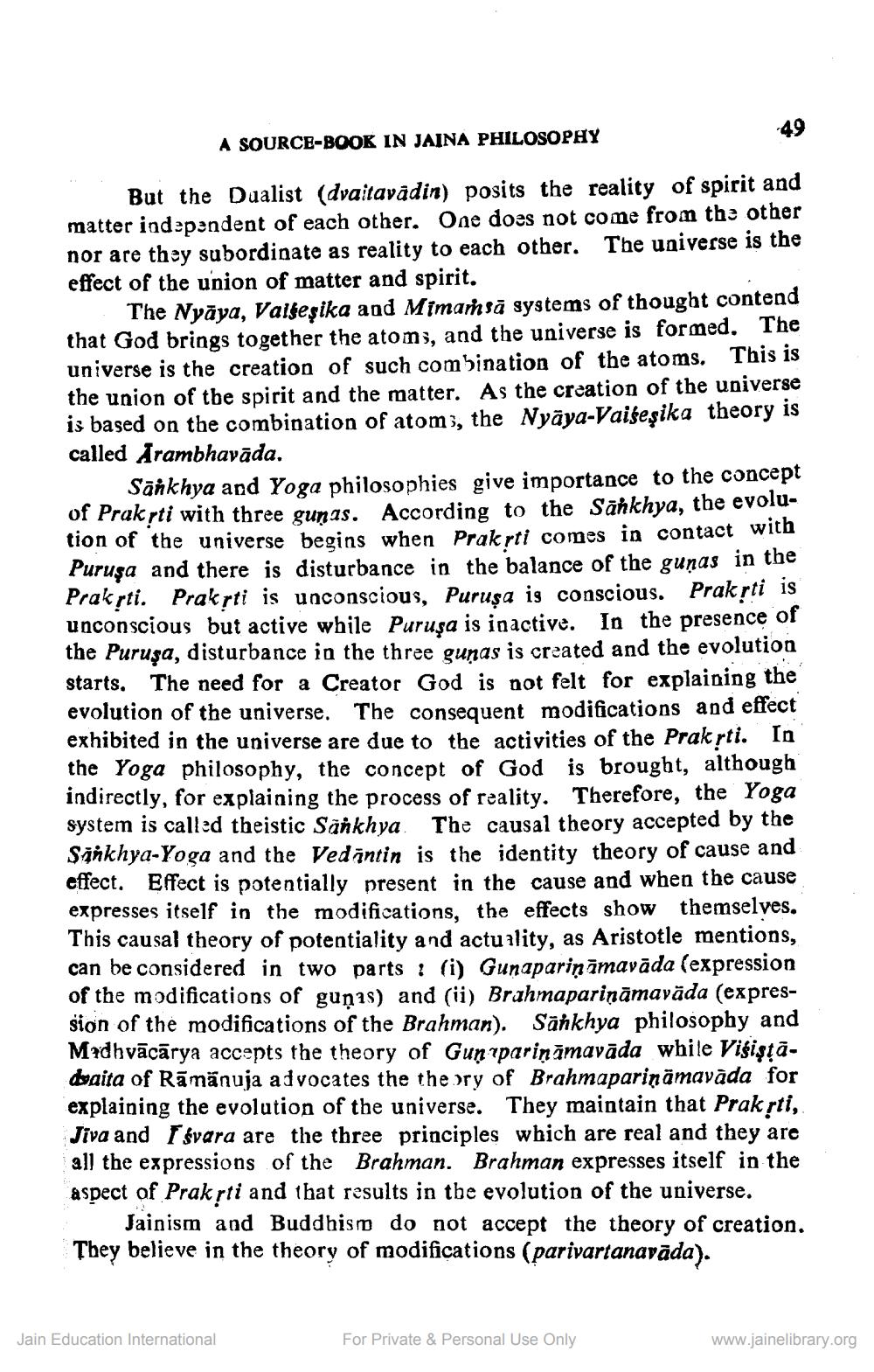________________
A SOURCE-BOOK IN JAINA PHILOSOPHY
But the Dualist (dvaitavadin) posits the reality of spirit and matter independent of each other. One does not come from the other nor are they subordinate as reality to each other. The universe is the effect of the union of matter and spirit.
49
The Nyaya, Valleşika and Mimamsā systems of thought contend that God brings together the atoms, and the universe is formed. The universe is the creation of such combination of the atoms. This is the union of the spirit and the matter. As the creation of the universe is based on the combination of atom, the Nyaya-Vaiseşika theory is called Arambhavāda.
Sankhya and Yoga philosophies give importance to the concept of Prakṛti with three gunas. According to the Sankhya, the evolution of the universe begins when Prakṛti comes in contact with Puruşa and there is disturbance in the balance of the gunas in the Prakṛti. Prakyti is unconscious, Purusa is conscious. Prakṛti is unconscious but active while Puruşa is inactive. In the presence of the Puruşa, disturbance in the three gunas is created and the evolution starts. The need for a Creator God is not felt for explaining the evolution of the universe. The consequent modifications and effect exhibited in the universe are due to the activities of the Prakrti. In the Yoga philosophy, the concept of God is brought, although indirectly, for explaining the process of reality. Therefore, the Yoga system is called theistic Sankhya. The causal theory accepted by the Sankhya-Yoga and the Vedantin is the identity theory of cause and effect. Effect is potentially present in the cause and when the cause expresses itself in the modifications, the effects show themselves. This causal theory of potentiality and actuality, as Aristotle mentions, can be considered in two parts: (i) Gunapariņāmavāda (expression of the modifications of gunas) and (ii) Brahmapariņāmavāda (expression of the modifications of the Brahman). Sähkhya philosophy and Madhvācārya accepts the theory of Guṇapariņāmavāda while Visiṣṭādaita of Rāmānuja advocates the theory of Brahmapariṇāmavāda for explaining the evolution of the universe. They maintain that Prakṛti, Jiva and Isvara are the three principles which are real and they are all the expressions of the Brahman. Brahman expresses itself in the aspect of Prakrti and that results in the evolution of the universe.
Jainism and Buddhism do not accept the theory of creation. They believe in the theory of modifications (parivartanavāda).
Jain Education International
For Private & Personal Use Only
www.jainelibrary.org




